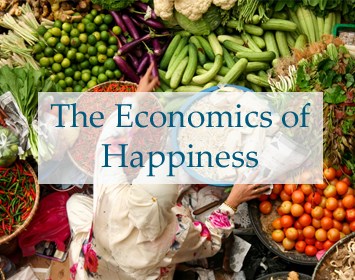Inauguration 2017 Special Coverage w/ Angela Davis, Naomi Klein, Ralph Nader & More
Menu

Special coverage in the Trump Era
From Public Citizen's Corporate Presidency site: "44 Trump administration officials have close ties to the Koch brothers and their network of political groups, particularly Vice President Mike Pence, White House Legislative Affairs Director Marc Short, EPA Administrator Scott Pruitt and White House budget director Mick Mulvaney."
Dark Money author Jane Mayer on The Dangers of President Pence, New Yorker, Oct. 23 issue on-line
Can Time Inc. Survive the Kochs? November 28, 2017 By Jane Mayer
..."This year, among the Kochs’ aims is to spend a projected four hundred million dollars in contributions from themselves and a small group of allied conservative donors they have assembled, to insure Republican victories in the 2018 midterm elections. Ordinarily, political reporters for Time magazine would chronicle this blatant attempt by the Kochs and their allies to buy political influence in the coming election cycle. Will they feel as free to do so now?"...
"Democracy in Chains: The Deep History of the Radical Right’s Stealth Plan for America" see: our site, and George Monbiot's essay on this key book by historian Nancy MacLean.
Full interview with The New Yorker’s Jane Mayer March 29, 2017, Democracy Now! about her article, "The Reclusive Hedge-Fund Tycoon Behind the Trump Presidency: How Robert Mercer Exploited America’s Populist Insurgency."
Democracy Now! Special Broadcast from the Women's March on Washington
The Economics of Happiness -- shorter version
Local Futures offers a free 19-minute abridged version of its award-winning documentary film The Economics of Happiness. It "brings us voices of hope of in a time of crisis." www.localfutures.org.
What's New?
March 11, 2011
Guns, war and the domestic battlefield
8 March 2011: "There is a class of weapons known to arms manufacturers, arms traders and arms control activists as ‘SALW’: Small Arms and Light Weapons. The ‘small arms’ part of the category refers to revolvers, self-loading pistols, rifles and shotguns - the sort of firearm a police officer, security guard, criminal or law-abiding hobbyist might own. It also includes the assault rifles and sub-machine guns that are the weapons of choice of army patrols and insurgent militias. The ‘light weapon’ category refers to bigger stuff, up to and including the portable anti-aircraft missile launcher. SALW do not excite as much public concern as nuclear devices and chemical weapons, but arguably, given their daily worldwide toll of death and injury, they too could be seen as ‘weapons of mass destruction’.
The Small Arms Survey estimates there are currently around 900 million such weapons in circulation worldwide and that they cause around half a million deaths annually. These arms are produced by more than a thousand manufacturing companies located in nearly a hundred countries. Recorded world trade in SALW, including parts and ammunition, hovers at around $300 billion a year. The USA is by far the biggest single exporting country, with more than three times the figure of its nearest competitor, Germany. Only a quarter of small arms and light weapons are thought to be in the armouries of state security sectors, the remainder are in the hands of non-state militias or civilians. Three-fifths of the deaths they cause occur in armed conflict, while two-fifths take place far from the battlefield – or rather they happen in the battlefield of everyday life, in murders (56%), suicides (14%) and accidents (5%).
Research and policy discussions reflecting a concern about the proliferation of SALW began in the early 1990s, as the collapse of the Soviet Union released huge numbers of second-hand weapons into shady markets. By the millennium there had been sufficient investigation, documentation and agitation by concerned governments and international NGOs to stir an official response. In July 2001 the United Nations organized a Conference on the Illicit Trade of Small Arms and Light Weapons in All its Aspects. It was a high-level inter-governmental affair, but non-governmental organizations were present too, lobbying for action. Key among them was the International Action Network on Small Arms (IANSA), a global alliance of 800 civil society organisations in 120 countries working to stop the proliferation and misuse of small arms and light weapons. The NGOs scored a notable success. The Conference resulted in a UN Programme of Action committing every signatory country to a series of steps to curb the manufacture, trading and possession of small arms and light weapons. Governments were required to establish an agency, some kind of ‘national focal point’, to have oversight of the efforts of the several ministries, departments and agencies that in any given country would be concerned in implementing the Programme.
Men are overwhelmingly the sex that, whether legally or illegally, manufactures, markets and transports, buys and sells, and eventually fires guns" ...
See Cynthia Cockburn's work with Women say No to NATO on our site.

